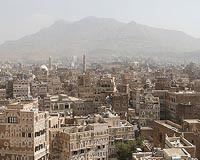| . |  |
. |
Beijing (AFP) June 10, 2010 The livelihood of thousands of Tibetans living on China's highest plateau is under threat as global warming and environmental degradation dry up water sources for three mighty Asian rivers, experts say. Dwindling glaciers and melting permafrost in the mountains surrounding the fragile Qinghai-Tibet plateau are leading to erosion of grasslands and wetlands, threatening the watershed of the Yangtze, Yellow and Mekong rivers. One prominent US environmental campaigner has even warned that the looming water crisis could trigger a major regional food shortage, as the rivers help irrigate vast wheat fields and rice paddies in China and southeast Asia. "The melting of the glaciers is a fairly serious phenomenon," Xin Yuanhong, a government scientist who headed a major environmental survey of the Yangtze source region, told AFP. "We expect that under current conditions, up to 30 percent of the glaciers in this region could disappear within 10 years. If global warming worsens, the glaciers will melt faster and the situation will worsen." The region provides nearly half of the water volume of the Yellow River, 25 percent of the Yangtze's water and 15 percent of the Mekong, Southeast Asia's most important waterway. Up to 580 million people live in the basins of the three rivers -- all major grain-producing areas that have been hit by serious droughts and falling water levels in the last few months. In 2005, China launched a 7.5 billion yuan (1.1-billion-dollar) programme to arrest erosion in the source area, in what was described as the nation's biggest-ever ecological conservation project. "As the permafrost melts, the land loses its capacity to absorb water," Xin said. "As more water runs off, there is more erosion, while the drier conditions allow for a rise in the rodent population, which further decimates the soil." As part of the conservation effort about 20,000 Tibetan herdsmen had migrated off the grasslands and been resettled in permanent villages by the start of this year, the state Xinhua news agency has said. Grazing has been restricted, while more and more herds are being raised in enclosures. For many Tibetan herdsmen, resettlement in villages has meant an end to a traditional nomadic life that goes back centuries. About half of the 270,000 people in Yushu prefecture -- which covers most of the source area -- rely on herding or the livestock industry to make their livings, according to government sources and media reports. Officials at a Yushu environmental protection association refused to comment when contacted by AFP, apparently due to the sensitivity of the issue. Besides desertification and grassland shrinkage, the region's lakes and wetlands are also drying up, experts say. "From 1976 to 2008, grassland marshes and swamplands have shrunk by over 32 percent" in the three river source area, Wang Genxu, a water expert at Qinghai's Institute of Mountain Hazards and the Environment, told AFP. "The area of lakes in the region has been reduced by 228 square kilometres (140 square miles), about 8.6 percent of the overall lakeland area," said Wang, whose institute is attached to the China Academy of Sciences. At a regional summit in April, Thai Prime Minister Abhisit Vejjajiva warned that the Mekong was "threatened by serious problems arising from both the unsustainable use of water and the effects of climate change". The Mekong "will not survive" without good management, he said. Earlier this year, water on the so-called "Mighty Mekong" dropped to its lowest level in 50 years in northern Thailand and Laos, alarming communities who depend on the river for food, transport, drinking water and irrigation. At the summit in the Thai resort town of Hua Hin, China denied its policies in the upper Mekong -- including the construction of dams and massive water use -- were to blame for lower water levels. But prominent US environmentalist Lester Brown warned last week on a trip to Beijing that the situation could provoke a serious food crisis in Asia, severely curtailing crop growth in China and elsewhere. "The melting of these mountain glaciers in the Himalayas and the Tibetan plateau represents the most massive projected threat to food security we have ever encountered," Brown said.
Share This Article With Planet Earth
Related Links Water News - Science, Technology and Politics
 Water crisis fuels Yemen's many woes
Water crisis fuels Yemen's many woesSanaa, Yemen (UPI) Jun 9, 2010 Two people were killed recently in a dispute over water rights in Yemen where extreme water scarcity is arguably the violence-plagued country's greatest crisis. With the ancient capital, Sanaa, expected to run dry in a few years, water shortages are stirring popular discontent and fueling growing political unrest in the country that lies at the southwestern tip of the Arabian Peninsula. ... read more |
|
| The content herein, unless otherwise known to be public domain, are Copyright 1995-2010 - SpaceDaily. AFP and UPI Wire Stories are copyright Agence France-Presse and United Press International. ESA Portal Reports are copyright European Space Agency. All NASA sourced material is public domain. Additional copyrights may apply in whole or part to other bona fide parties. Advertising does not imply endorsement,agreement or approval of any opinions, statements or information provided by SpaceDaily on any Web page published or hosted by SpaceDaily. Privacy Statement |